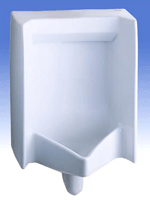
If you think back to your school days, you might remember that a trip to the Men’s Room could be less than pleasant. Maybe you wondered, “Where is that smell coming from?” Chances are, it was coming from the urinals.
The problem of urinal odors doesn’t stop in school districts. Many hospitals, industrial plants and commercial buildings have been faced with this same problem, and have found it difficult to find an adequate solution. The problem is compounded by the fact that it’s not always easy to identify the source of the odor—this is especially the case in large buildings where voids connect several floors and odors coming from one floor may surface on a different floor.
What causes the problem of urinal odor, and how can it be eradicated?
Here are some of the chief causes of urinal odors:
- Urinals are not properly cleaned: in some cases, the simple answer is wrong chemistry: lack of an effective cleaning agent, one which dissolves uratic salts, is being used. If you see brown stains (rust) under the urinal bowl and around the traps, a probable cause is ineffective cleaning.
- Flush water is inadequate: urinals that use water (as opposed to waterless urinals) require a sufficient water flow to operate efficiently. In some systems, several urinals derive water from a single cistern—those which are farthest from the cistern don’t receive enough water. One solution is the use of a sensor flush controller, which automatically flush the urinal, after the urinal is used, and every few hours when the urinal hasn’t been used.
- Broken pipes: copper pipes in particular tend to break over time, and odor in those pipes ends up in the restroom. Typically, this can be repaired by installing new pipes. However, if the break has caused urine to seep into the panels or grouting, replacing the pipes won’t fix the problem. In this situation, areas which have been exposed to urine will need to be thoroughly cleaned or replaced.
- Malfunctioning valves: some urinals are fitted with one-way valves that prevent water from being sucked out of the traps when a urinal is flushed. In those which aren't, the water seal can break and odors in the pipes will leak into the washroom.
- High traffic: you might notice odors at times of the day when many people are using the washroom—for example, during the lunch hour or over coffee breaks. This is probably not a problem with the urinals, but due to urine particles spraying into the air.
- Temperature: bacteria tend to multiply in warmer temperatures. If a washroom is excessively warm, bacteria can grow and odors result.
Your best solution to prevent urinal problems, which result in odors, is to use a cleaning product which effectively dissolves uratic salts. "F-2002" is such a product—powerful, because it uses an organic salt, but mild like liquid dish soap, and environmentally safe.
To learn more about using F-2002 to safely dissolve uratic salts in urinals, contact us today.
see product label here

